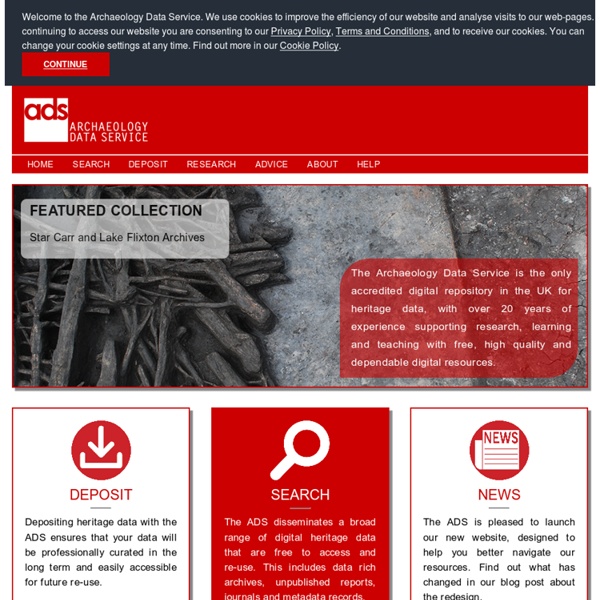



Electronic Resources for Classicists It's been more than 20 years since Electronic Resources first appeared. The web was still in its infancy and the gopher was the state of the art in technology. The first version of this survey was published in the February 1994 issue of the New England Classical Journal. [NECJ XXI.3 (1993-94) 117-21]. One year later the number of web sites and internet resources had grown so much that a revision of the list was necessary. The second survey was published in the February 1995 issue of the same journal (NECJ XXII.3 (February 1995). In the summer of 1995 the survey was converted to HTML with links to the various resources and made available online. Maria Pantelia Professor of Classics Thesaurus Linguae Graecae® University of California, Irvine
English Heritage: Metric Survey Paul Bryan, Bill Blake, Jon Bedford, David Barber, Jon Mills, David Andrews Metric survey forms an essential part of the conservation cycle and provides a valuable source of base mapping for analytical projects. In supplying metric survey data to buildings curators, conservators, architects and archaeologists, surveyors need to know what makes survey work for cultural heritage. Getting the right survey for the right job is important. It is a revised and updated second edition of Metric Survey Specifications for English Heritage - the standard specification that English Heritage has successfully used to procure metric survey for the last nine years. 1. 2. 3. 4. 5. 6. 7. If you require an alternative accessible version of this document (for instance in audio, Braille or large print) please contact our Customer Services Department.
NDLTD: Networked Digital Library of Theses and Dissertations — NDLTD BBC Radio 4 - In Our Time, Thermopylae English Heritage: Laser Scanning for Heritage This document has been generated as part of the Heritage3D project. Heritage3D is sponsored by English Heritage’s National Heritage Protection Commissions programme (projects 3789 MAIN and 5496 MAIN) and undertaken by the School of Civil Engineering and Geosciences at Newcastle University. The project has sought to provide guidance to archaeologists, local planning authorities, instrument manufacturers and software developers on the use of 3D laser scanning in the conservation of cultural heritage. The primary aims of this project were to develop and support best practice in laser scanning for archaeology and architecture, and to disseminate this best practice to users, along with the education of likely beneficiaries. A guidance note arising from Heritage3D, entitled ‘3D Laser Scanning for Heritage’ was published in 2007. The present document, a substantial revision of the 2007 guidance note, has been developed as part of the follow-on project.
tDAR National Geographic - Atlantis Legend If the writing of the ancient Greek philosopher Plato had not contained so much truth about the human condition, his name would have been forgotten centuries ago. But one of his most famous stories—the cataclysmic destruction of the ancient civilization of Atlantis—is almost certainly false. So why is this story still repeated more than 2,300 years after Plato's death? "It's a story that captures the imagination," says James Romm, a professor of classics at Bard College in Annandale, New York. "It's a great myth. Plato told the story of Atlantis around 360 B.C. There are many theories about where Atlantis was—in the Mediterranean, off the coast of Spain, even under what is now Antarctica. Plato said Atlantis existed about 9,000 years before his own time, and that its story had been passed down by poets, priests, and others. Few, if any, scientists think Atlantis actually existed. Romm believes Plato created the story of Atlantis to convey some of his philosophical theories.
The Museum of the Future Diotima: Women & Gender in the Ancient World Call for Collaborators to The On-line Companion to The Worlds of Roman Women The On-Line Companion to the Focus Reader, The Worlds of Roman Women, expands the book's wide representation of Latin texts by and about women dating from the earliest periods through the fourth century CE. The medium of a website, moreover, offers the opportunity to integrate visuals to texts, thus enabling users to make connections between language and material culture. The Companion has two major parts. The Worlds section includes Class, Religion, Childhood, Learning, Marriage, Family, Body, State, Work, and Flirtation. The Instructional section contains: a Guide to Using the Site; an Annotated Bibliography; Activities for Classroom Use; Syllabi and Lesson Plans; and Credits and Contributors. Future development of the Companion will extend the geographic reach of Companion to all the provinces. This point leads to our call for collaborators from all Latin teachers on all levels.
Digital Engagement Framework : Structure your thinking about digital strategy Museum Identity Ltd - high-quality conferences, study days, publications, for professionals